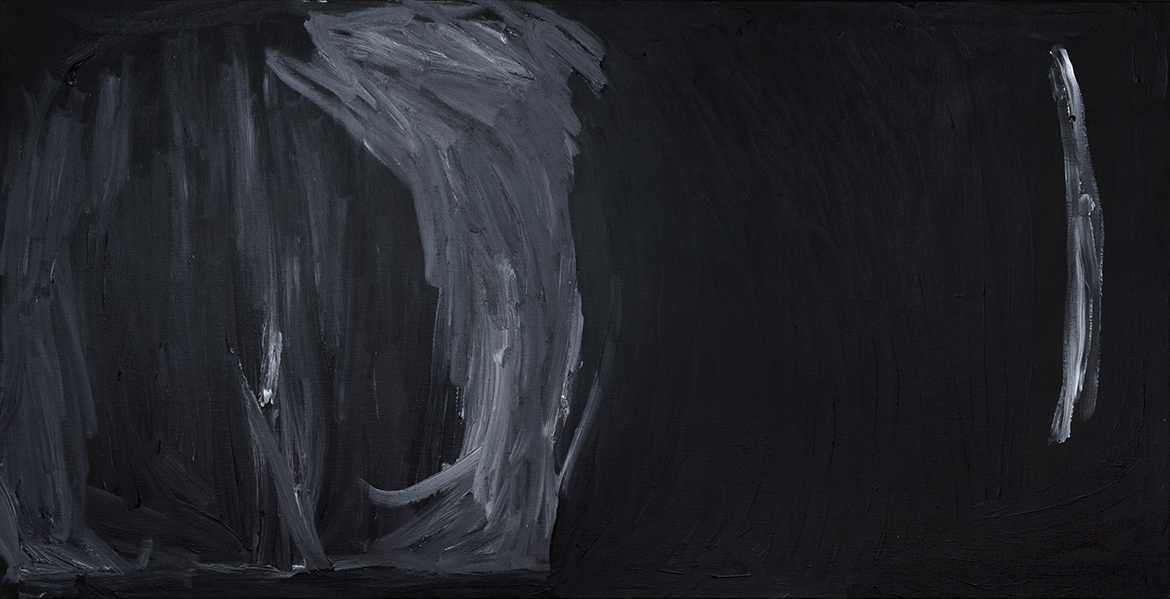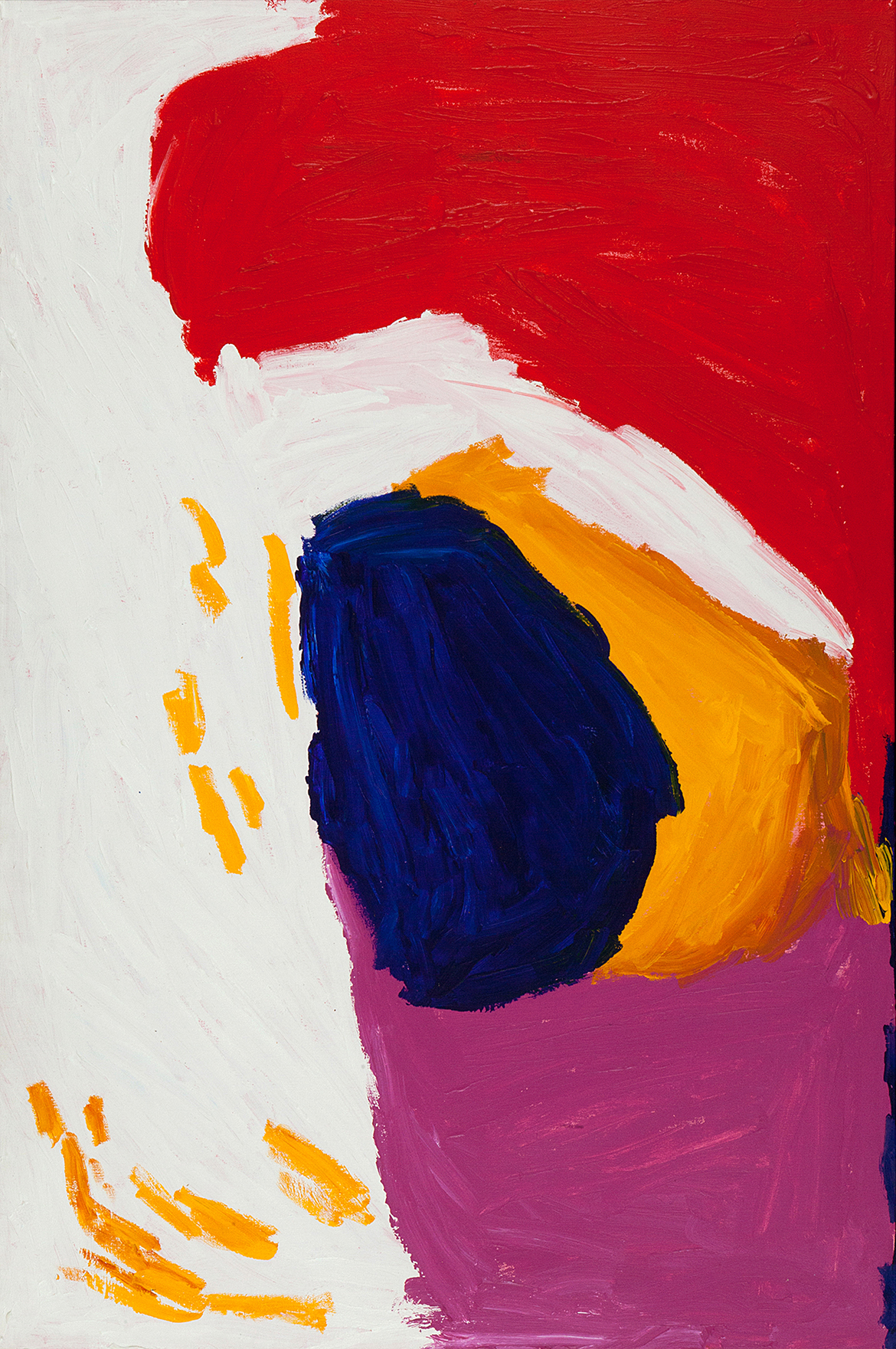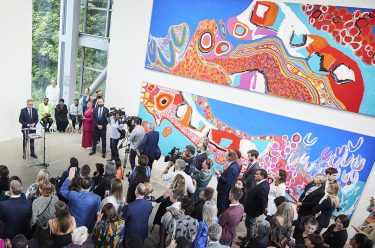Mirdidingkingathi Juwarnda Sally Gabori’s depictions of her homeland are abstract in nature, but retain representational elements which map traditional country and cultural identity in monumental paintings.
Thundi (or Thunduyi) is her father’s Country, adjacent to a river near the island’s northern tip, which runs parallel to a ridge of tall sandhills that skirt its north-eastern coast. A large saltpan marks the wet season extent of the river, while its dry season form is flanked by mangroves. The river empties out onto a large sand and mud flat to the north, which reveal large sandbars at low tide.
This is the big river at Thundi on Bentinck Island. This is where my father was born. Mirdidingkingathi Juwarnda Sally Gabori
Many of Sally’s early paintings featured this river area, an important fishing place. Colourful flashes of paint indicate her favourite fish species, the bluefish. Later paintings of Thundi were generally much more austere in tone, often utilising only two colours to create fields of intense tonal and emotional intensity.


Her stark black-and-white painting, Thundi 2011 (illustrated), evokes the sandflats and sandbars off Thundi’s coast, pictured as if glistening in the light of a full moon. Sally overpainted other works in white, evoking sandflat ripple patterns, frothing water at the river’s mouth, small lapping waves, storms and cyclones approaching from the northern Gulf, or the complete inundation of the area during extreme weather.
Many of Sally’s Thundi paintings connect important sites along the north-eastern side of Bentinck Island, including Makarrki, her brother’s country at the head of the large river at the centre of the north shore, and Rukuthi, one of her family’s main living sites at Oak Tree Point at the island’s north-eastern tip.

My Father’s Country 2006 (illustrated) pictures Thundi, the country surrounding a river near the north-eastern tip of Bentinck Island, which was the country of Gabori’s father, Thunduyingathi Bijarrb. Gabori noted that the large circle was an important fishing area at the mouth of the river. When asked about the yellow marks she replied that they were her favourite fish, the snapper. She then found a paintbrush and added more yellow marks to indicate the abundance of these fish at Thundi and the importance of the area as a key fishing ground for Kaiadilt people.
Acknowledgment of Country
The Queensland Art Gallery | Gallery of Modern Art acknowledges the Traditional Owners of the land on which the Gallery stands in Brisbane. We pay respect to Aboriginal and Torres Strait Islander Elders past and present and, in the spirit of reconciliation, acknowledge the immense creative contribution First Australians make to the art and culture of this country.
It is customary in many Indigenous communities not to mention the name or reproduce photographs of the deceased. All such mentions and photographs on the QAGOMA Blog are with permission, however, care and discretion should be exercised.
#QAGOMA

